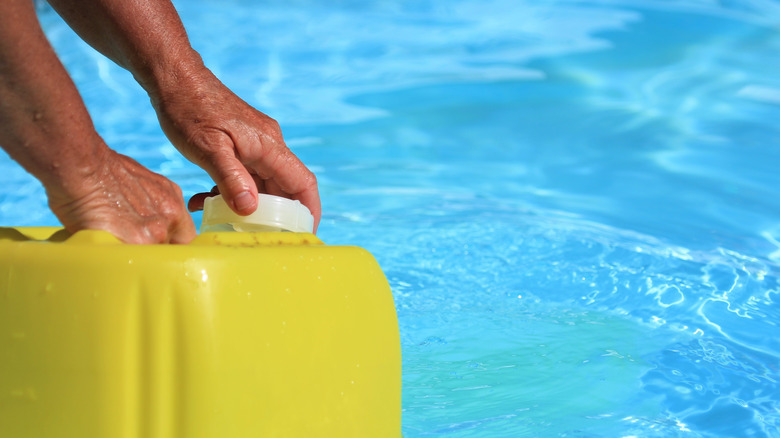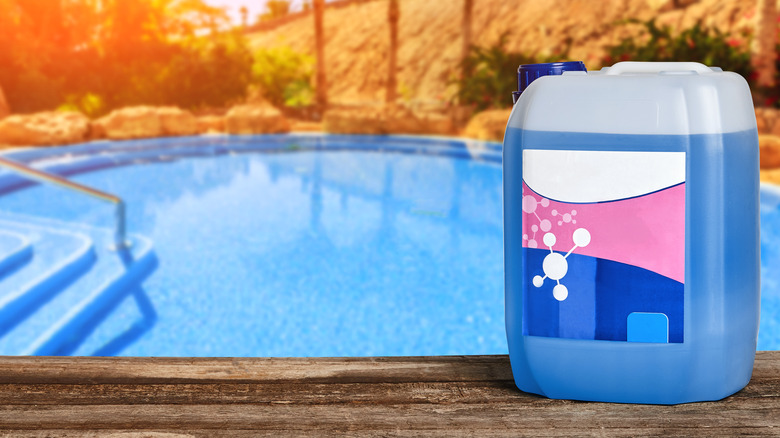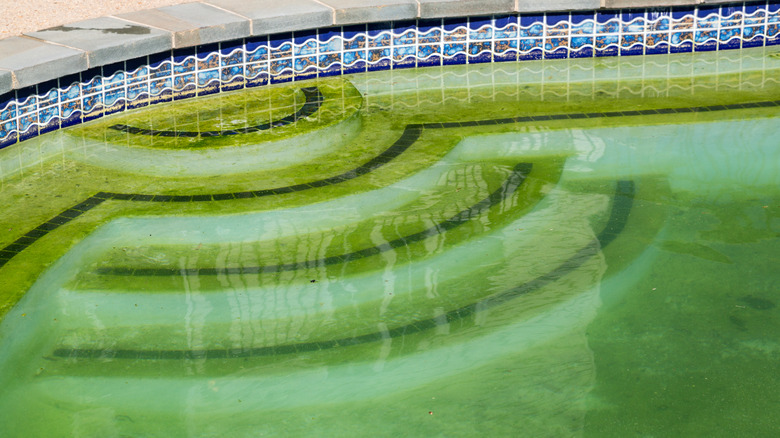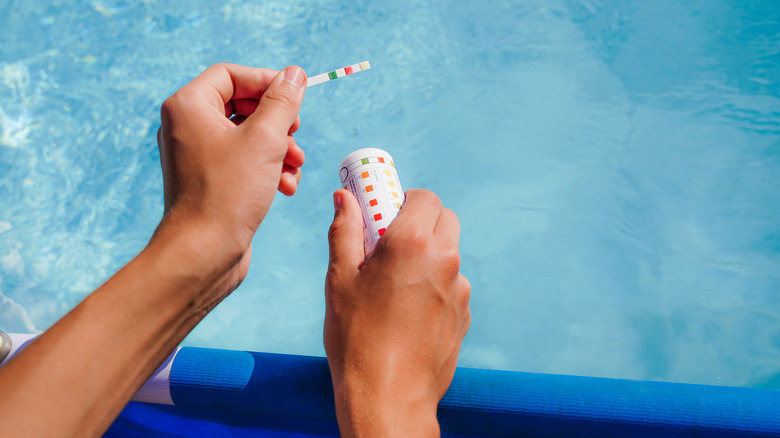How Much Chlorine Do You Need To Shock A Pool?
Summer has arrived, and so has swim season! The time has come for cook-outs, pool parties, and of course, a step-up in pool maintenance. This means that you'll need to shock your pool more often if you live in a year-round warm climate or shock it for the first time in months if the temperatures are just now rising. The pool shocking process is imperative because, as mentioned in the E-guide for In The Swim, you'll be ridding your pool of harmful bacteria and algae to create a safe swimming environment. Plus, your family and guests will be more eager to dive in if the water is crystal clear.
Thus, it's only natural to wonder how much chlorine you need to shock your pool. We've done the math to answer that question, plus some pointers on determining the ratio of chlorine to pool water for accurate dosage. By coming up with a precise amount of chlorine, you'll be able to disinfect and clear up your pool water in very little time.
How much chlorine to shock your pool?
To determine the amount of chlorine you need to shock your pool, you must first figure out the number of gallons of water that fills it. SwimmingPool offers a simple equation: Multiply the length, width, and depth of your pool, and then, the answer by 7.5. That is, length x width x depth x 7.5 = volume, expressed in gallons. The final result will give you the amount of water contained in 1 cubic foot.
For circular or oval pools, multiply pi by the radius squared, by the average depth of the pool, and by 7.5. That is, 3.14 x radius squared x average depth x 7.5 = volume, expressed in gallons. However, your irregular-shaped and kidney-shaped pools can get more complicated but not by much. Diagram the pool and divide it into two or more areas. After that, you can utilize the equations above to figure out how much water each area contains and then add those numbers together. Follow the same process to calculate the amount of water in your pool if the depths vary from one end to the other.
If you don't care for the hassle of putting pen to paper, use the Pool Volume Calculator tool offered by SwimmingPool. Knowing the gallons of water in your pool enables you to accurately measure how much chlorine to use for shocking. For a simple rule of thumb, Leisure Pool & Spa Supply, Inc. says that generally, you'll need 2 gallons of shock per 10,000 gallons of water.
How much chlorine to shock and clear out algae?
Also, you might wonder how much chlorine would shock a pool with an algae problem. Ultimately, that depends on the state and level of the algae invasion. If the algae are dark green, you might need to use more chlorine than prescribed for standard shock treatments, but a light green tone to your pool water means using fewer chemicals. For example, as noted by Moira Sanchez of the Realty Times, you should add 1 pound of shock treatment per 10,000 gallons of water if the algae add only a light green hue.
Likewise, a pool with a medium green tinge requires 2 pounds per 10,000 gallons of water and 3 pounds per 10,000 gallons for one with dark green algae. However, one tip that Sanchez emphasizes is to clean the pool entirely and to lower the water's pH before applying the shock treatment. The color of the water needs to be closer to blue than green; otherwise, the process will not work as quickly or effectively.
How much shock treatment is too much?
According to the Pool Care Guide, there is no such thing as using too much chlorine to shock your pool. At least, if you do, no serious harm will occur, and barring the possible discoloration of clothing and hair, all you're doing is wasting chemicals and, ergo, money. But we must emphasize that applying the correct quantity of chlorine is vital to the pool shocking process working effectively.
You might need to be more concerned about using too little chlorine, also known as under-shocking a pool. When you don't use the correct ratio of chlorine to the water, the shocking process won't be effective, and your pH levels will be off-kilter. Plus, in some cases, you'll still have that algae problem. Therefore, your safest bet is to stick with the ratio of 2 gallons of liquid chlorine per 10,000 gallons of water. Your water's pH will level as the bacteria and algae die off, thus providing a safe swimming environment.



